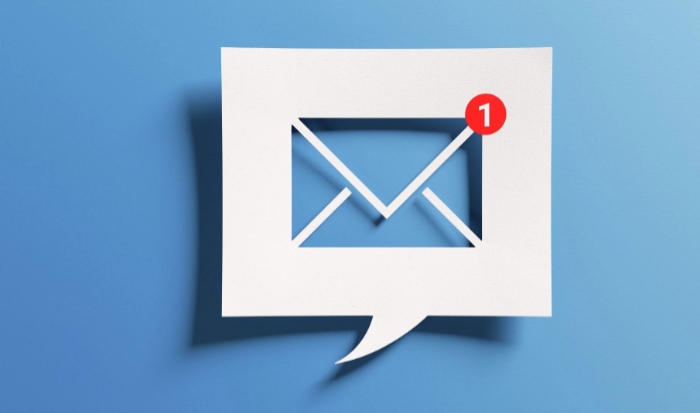What Is Email Tracking? Exposing the Silent Observers

Ever wonder what happens to your email once you click the “send” button? Does it get opened immediately, or does it languish in the recipient’s inbox? What if there was a way to know not just if your email was opened, but also when, where, and on what device?
Definition of Email Tracking
Email tracking has become an integral part of modern digital communications, particularly in business settings.
What is Email Tracking?
Email tracking refers to the process of monitoring various metrics and actions related to a sent email. In simpler terms, it’s a way to gauge the behavior of the recipient once the email reaches their inbox.
This technology can provide insights into whether the email was opened, what time it was accessed, which links within the email were clicked, and even the geographical location and device used by the recipient.
Types of Tracking Metrics
Different tracking solutions offer various metrics. Here are some common types:
Open Rates
One of the most basic forms of tracking, open rates measure how often an email is viewed or opened. This data can help you assess the effectiveness of your subject line and timing.
Click-Through Rates
This metric focuses on the number of times a recipient clicks on any hyperlinks embedded within the email. It can offer insights into what content is most engaging for the reader.
Location and Device Data
Some tracking solutions offer information on the location from which the email was opened, down to the city level. Additionally, you can get data on the type of device used, be it a mobile phone, tablet, or desktop computer.
How Email Tracking Works
The mechanism behind email tracking might seem like magic to the uninitiated, but it is actually grounded in well-established technologies.
The Core Technologies
Two primary technologies drive email tracking: tracking pixels and embedded links. While both serve the purpose of gathering data, they operate in different ways and provide different types of information.
Tracking Pixels
A tracking pixel is a tiny, invisible image inserted into an email. When the recipient opens the email, this image is downloaded from the server, triggering a notification to the sender that the email has been viewed.
In this manner, tracking pixels are often used to measure open rates.
Embedded Links
Unlike tracking pixels, which are passive, embedded links require action from the recipient. These are hyperlinks placed within the email that have tracking features.
When a recipient clicks on one of these links, the click is registered and various data points are collected, such as the time of the click and the device used.
The Process of Email Tracking
- Sending the Email – Initially, the sender composes an email with tracking features enabled, either through built-in options in an email client or via third-party tracking software.
- Email Reception – The recipient receives the email in their inbox, just like any other email. At this stage, no tracking information has been gathered yet.
- Email Interaction – Once the recipient opens the email, the tracking pixel is activated as it gets downloaded. If there are embedded links and the recipient clicks on them, additional data is collected.
- Data Collection – The tracking service gathers all the data points: whether the email was opened, when, where, and what links were clicked on, among other metrics.
- Reporting – This data is then presented to the sender in a digestible format, typically through a dashboard interface where various metrics can be viewed and analyzed.
Use Cases for Email Tracking
Email tracking is not a one-size-fits-all tool; its utility varies depending on the goals of the sender. From personal communications to intricate business strategies, the use cases for email tracking are numerous.
Personal Communications
Important Emails
Many of us have sent emails that contain important information, whether it be for a job application or a critical update to family members. Tracking can let you know if and when your message has been seen, allowing you to take appropriate follow-up actions.
Event Invitations
Sending out invitations for personal events like weddings or birthday parties can benefit from tracking. Knowing who has opened the invite can help in estimating attendance and making necessary arrangements.
Business Communications
Email Marketing Campaigns
One of the most popular uses of email tracking is in marketing. Companies can gather data on open rates, click-through rates, and more, to assess the efficacy of their campaigns. This information helps in refining future campaigns and improving engagement.
Sales and Customer Outreach
Sales teams often use email tracking to gauge client or customer interest. Knowing if a prospective client has interacted with an email can be a cue for the sales team to proceed with the next steps in the sales cycle.
Internal Communications
Within an organization, email tracking can be useful for ensuring that important memos or updates have been received and seen by employees. It can also provide insights into how internal communications are engaged with, helping HR and management teams make data-driven decisions.
Legal and Compliance Purposes
Email tracking is sometimes used in legal contexts to confirm the receipt of important documents or notices. It can provide a digital paper trail that may be useful in legal proceedings or compliance checks.
Ethical and Privacy Considerations

While email tracking brings with it a host of benefits, it also raises important questions about ethics and privacy. Given that tracking often happens without explicit consent from the recipient, there are valid concerns regarding the invasion of privacy and the ethical implications of such tracking methods.
Consent and Legality
General Data Protection Regulation (GDPR)
In Europe, the GDPR dictates stringent guidelines for data collection and user consent. According to this regulation, the recipient must be informed that tracking technologies are being used and must give their explicit consent.
CAN-SPAM Act
In the United States, the CAN-SPAM Act governs email communications, including tracking. While it doesn’t explicitly require consent for tracking, it mandates that emails contain a clear and conspicuous explanation of how the recipient can opt out of getting such emails in the future.
Ethical Questions
Transparency
The ethical debate often centers around transparency. Should senders be obligated to inform recipients that their actions within the email are being tracked? Some argue that tracking without disclosure can be an invasion of privacy.
Unintended Consequences
Another ethical concern is the potential for misuse of the data collected. For instance, could an employer use tracking data to scrutinize an employee’s productivity without their knowledge?
Steps for Ethical Email Tracking
- Full Disclosure – Always inform recipients if tracking technologies are in use. Some email tracking tools offer an option to include a small notification at the bottom of the email.
- Opt-In or Opt-Out Options – Provide recipients with an option to either opt in or opt out of tracking. This respects the autonomy of the individual receiving the email.
- Data Security – Ensure that any data collected is securely stored and only used for its intended purpose. Extra precautions should be taken to protect sensitive information.
- Lawful Compliance – Familiarize yourself with the laws governing email tracking in your jurisdiction and ensure you comply with them.
Pros and Cons of Email Tracking
Email tracking can be a double-edged sword. While it offers significant advantages, particularly in business contexts, it also comes with drawbacks that cannot be overlooked.
Advantages of Email Tracking
Real-Time Feedback
One of the major benefits is the provision of real-time feedback. Senders can know almost instantly when an email is opened, which can be critical for timely follow-ups.
Data-Driven Decisions
Email tracking provides quantifiable metrics that can be invaluable for strategic planning. Marketers can tweak campaigns, and salespeople can prioritize leads based on these insights.
Improved Personalization
With a greater understanding of recipient behavior, emails can be more effectively personalized. Knowing what kind of content engages the audience can lead to more targeted and successful communications.
Disadvantages of Email Tracking
Privacy Concerns
The most glaring drawback is the potential invasion of privacy. As discussed in the previous section on ethical and privacy considerations, not all recipients may be comfortable with their actions being monitored.
Legal Risks
Depending on jurisdiction and how the email tracking is conducted, there could be legal risks involved. Failing to comply with laws like GDPR in Europe can result in hefty fines.
False Positives
Email tracking is not foolproof. For instance, some email clients block images by default, which would prevent a tracking pixel from registering an open. As such, the data may not always be entirely accurate.
Both Sides of the Coin
- Sender’s Perspective – For the sender, tracking can be an essential tool for measuring the success of communications. It provides an added layer of information that can significantly improve outreach and engagement strategies.
- Recipient’s Perspective – From the viewpoint of the recipient, email tracking can feel intrusive. Knowing that your behavior is being monitored might make you less likely to engage with an email, even if the content is relevant to you.
How to Protect Against Unwanted Email Tracking
While the benefits of email tracking for senders are clear, what about recipients who wish to maintain their privacy? The tracking of emails has raised concerns about personal privacy and data security.
Fortunately, there are various ways to protect oneself from unwanted email tracking.
Use Email Clients with Tracking Protection
Built-in Features
Certain email clients come equipped with built-in features to counteract tracking attempts. For instance, some clients block external images, including tracking pixels, by default.
Third-Party Extensions
If your email client doesn’t offer robust anti-tracking features, consider installing a third-party extension designed to block email tracking attempts.
Modify Email Settings
Disable Image Loading
Most email tracking technologies rely on downloading small images like pixels. You can set your email client to not automatically download images, thus preventing tracking pixels from loading.
Use Plain Text
Switching your email view to plain text will also prevent tracking pixels and other embedded elements from loading.
Be Cautious with Links
Check URL Before Clicking
Before clicking any link in an email, hover over it to see the URL it directs to. Be cautious if the URL appears to contain tracking codes.
Use Link Scanners
Several online tools and browser extensions can scan links to identify if they are designed for tracking. Utilize these tools when in doubt.
Conclusion
Email tracking serves a dual role, offering substantial benefits for senders while raising valid privacy and ethical considerations for recipients. From enabling real-time feedback and data-driven decision-making to posing potential privacy invasions and legal risks, this technology embodies a complex interplay of pros and cons.
Various safeguards exist for those wishing to evade unwanted tracking, emphasizing the importance of user awareness and proactive privacy measures. Ultimately, the ethical and effective use of email tracking hinges on a balanced approach, guided by respect for both legal frameworks and individual privacy.


